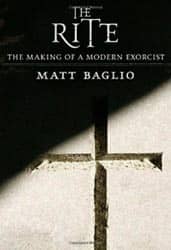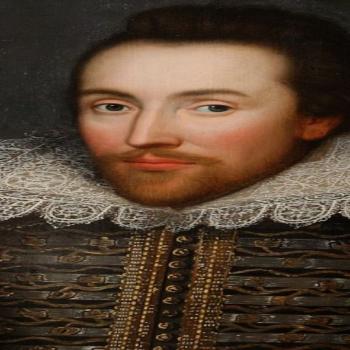 The Rite: The Making of a Modern Exorcist
The Rite: The Making of a Modern Exorcist
By Matt Baglio
304 pp.
Doubleday Religion
March 2009
Mention exorcism to the average American and the first thought is likely to be about a movie. From The Exorcist in 1973 to The Last Exorcism, released earlier this year, Tinsel Town has defined exorcism in the popular imagination, sometimes by loosely basing their plot lines on real-life examples.
Hollywood's latest entry in the field, the forthcoming The Rite, starring Anthony Hopkins, has a closer foundation of fact than most of its earlier efforts. The Rite is based on a book of the same name about the experiences of Father Gary Thomas, a San Jose, California priest who traveled to Rome to learn to perform the ancient Church ritual of exorcism. While there is no telling how closely the movie will hew to the book, we needn't allow Hollywood's powerful visuals and abridged narrative to get the last word.
The Rite: The Making of a Modern Exorcist, by journalist Matt Baglio, is a riveting, accessible book that educates even as it fascinates, juxtaposing a priest's matter-of-fact existence amid the reality and extraordinary activity of the Devil. Here's an example:
While exorcists admit that their ministry can sometimes be a heavy burden, it would be a mistake, they say, to overstate the power of the Devil. As Father Amorth writes, "A priest who is afraid of the Devil is like a shepherd who is afraid of a wolf. It is a groundless fear." The Devil," says Amorth, is already "doing us as much harm as he possibly can."
And so rather than fear him, exorcists say, it is better to emulate saints such as Teresa of Avila, who proclaimed, "If this Lord is powerful, as I see that he is and I know that he is, and if the devils are his slaves (and there is no doubt about this because it's a matter of faith), what evil can they do to me since I am a servant of this Lord and King? Why shouldn't I have the fortitude to engage in combat with all of hell?"
Baglio followed Father Thomas from California to Rome after he agreed to his bishop's request to become educated as an exorcist. Eventually Father Thomas became the apprentice of an Italian exorcist, Father Giancarlo Gramolazzo, who brought Thomas a depth of applied knowledge, beyond the "theory" of classroom lectures. The book charts how the young priest gradually overcame his innate American skepticism and began, as he sympathized for and with a number of victims, to understand the reality of demonic possession.
Baglio's coverage of the university classes is thorough; he takes the time to discuss Church teachings about anything to do with demonic possession, including angels, free will, God's power, and human ailments. Skillfully interwoven with these discussions are Father Thomas's experiences and thoughts about the entire, step-by-step process and real life stories told by people who have been exorcised of a demon.
The Rite helps us realize just how thoroughly our popular notions of exorcism have been fashioned via cinema and fiction. Exorcisms often aren't accomplished in one fell swoop. Instead, the process may take years of repeated encounters and prayers and this surprises some:
"People don't understand what we do," says Father Gramolazzo. "People come to see us expecting to be healed right away." . . .
Instead, as Father Gramolazzo explains, exorcism is more akin to a journey, with the exorcist acting as a kind of "spiritual director" helping the victim to "rediscover the grace of God" through prayer and the sacraments. . . .
Getting people to see it this way is not always easy for the exorcist. "Half the battle is to change their whole purpose so they don't see it in the light of getting rid of a problem, but see it in the light of being more fully converted or being converted at all," says English exorcist Father Jeremy Davies. "That's the whole aim. It's what I'm always telling people week by week. And that's the most important thing—the exorcism is secondary to that." . . .
Simply put, the prayers of the exorcism weaken the power that the demon has over the person. The healing, however, cannot happen without the full participation of the individual. Victims of possession are exhorted to go to weekly confession, to recite rosary daily, and above all to receive the Eucharist. . . .





